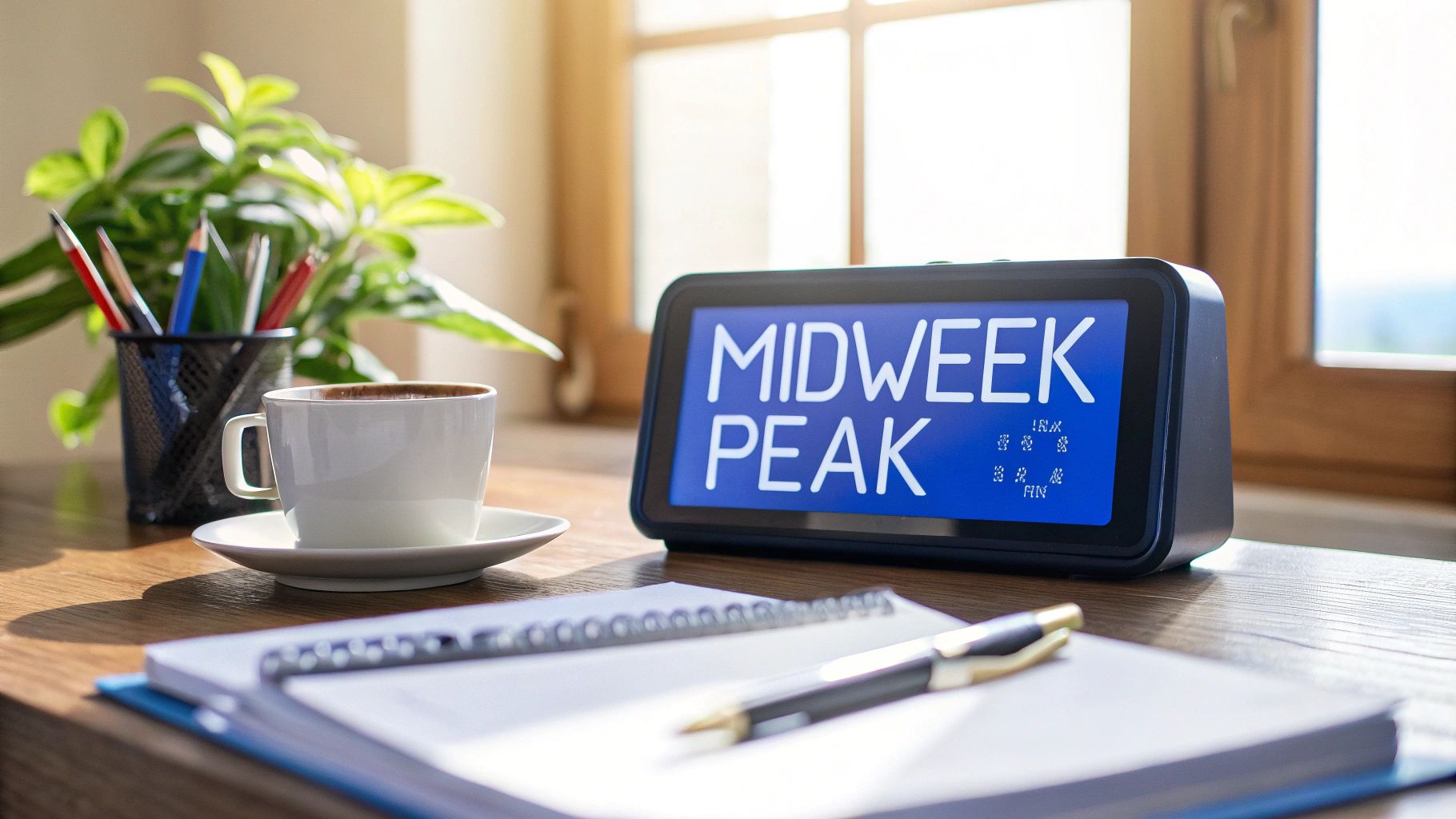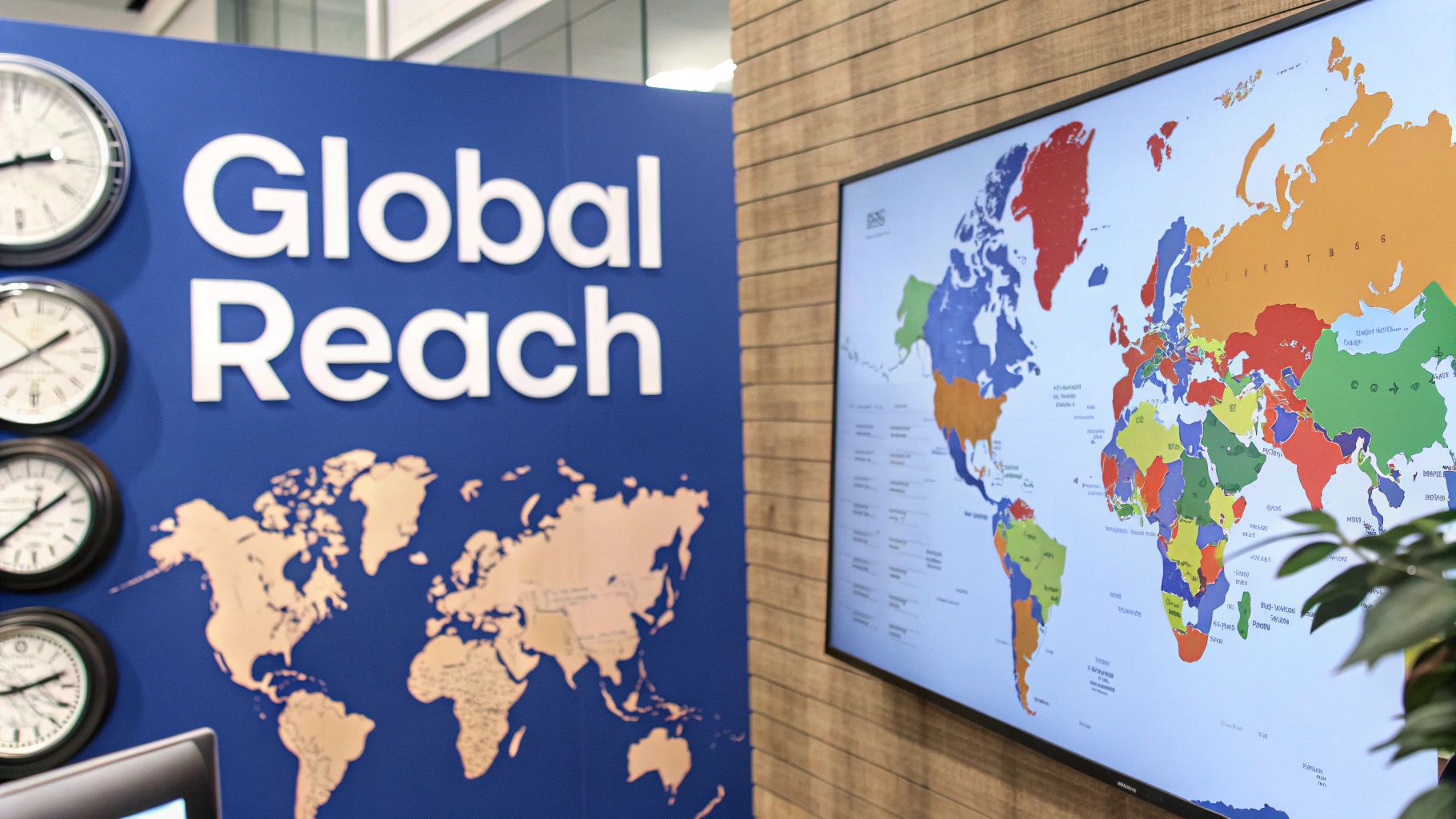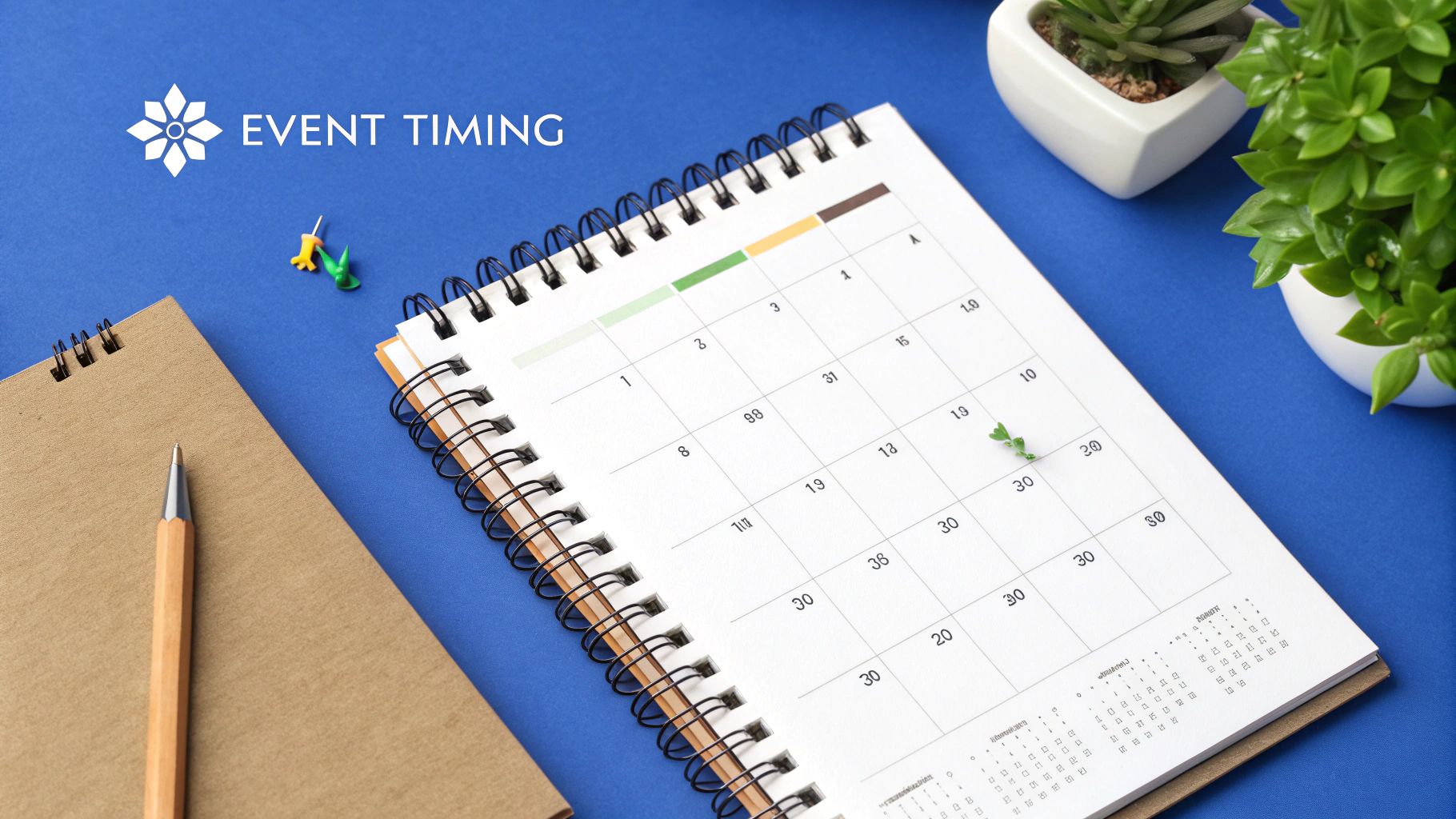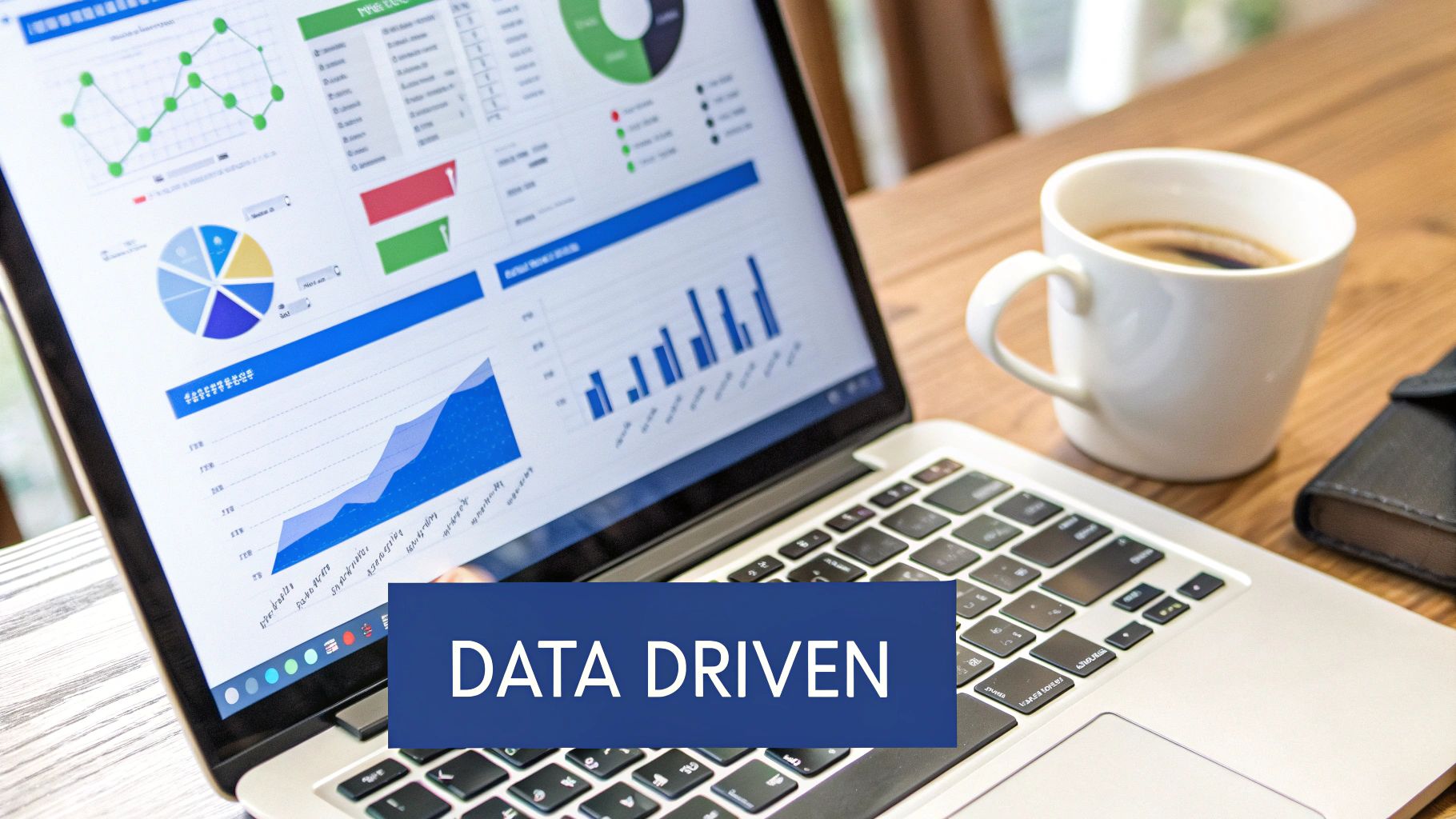8 Tips for Finding the Best Time to Post on LinkedIn
8 Tips for Finding the Best Time to Post on LinkedIn
Best Times To Post On LinkedIn: A Guide For Ghostwriters
Every ghostwriter knows that great LinkedIn content needs perfect timing. Gone are the days when posting at random times would bring engagement. With LinkedIn's evolving algorithm, smart timing makes a real difference in how well your posts perform.
Good timing means understanding when your target audience is most active. Think about when that busy CEO, founder, or industry expert you're writing for is checking their feed. This kind of strategic planning directly shapes how many likes and comments your posts get - and helps grow your client's presence on the platform.
Here are 8 proven methods to find optimal posting times for LinkedIn. These strategies will help your content reach more people and create better results for your clients. Let's dive in and explore how to make your LinkedIn posting schedule work harder for you.
1. Midweek Mornings (Tuesday-Thursday, 9-11 AM)

The best time to share content on LinkedIn is during midweek mornings - specifically between 9-11 AM on Tuesday, Wednesday, and Thursday. During these hours, professionals are fully settled into their workday routines and actively checking their LinkedIn feeds for updates and networking opportunities.
Why These Hours Work Best
The 9-11 AM timeframe matches natural work patterns. While Mondays often involve catching up after weekends and Fridays see decreased engagement as people look forward to time off, mid-week mornings hit the sweet spot. Professionals are focused, productive, and more likely to engage with relevant content during these hours.
Key Benefits:
- Maximum audience reach during peak platform usage
- Professionals are actively checking feeds during work hours
- Higher likelihood of engagement through likes and comments
Real Results from Major Brands
Leading companies have seen clear benefits from posting during these hours. HubSpot reports 30% higher engagement for content shared in this window. Microsoft has also built their LinkedIn strategy around these peak morning hours based on consistently strong performance.
What Works Well:
- Content gets seen during productive work hours
- Quick engagement from active users
- Ideal timing for business-focused posts
Potential Challenges:
- More competition for attention
- Time zone differences can impact reach
- May miss audiences with non-standard schedules
Tips for Success
Timing Strategies:
- Schedule posts for 15 minutes before the hour (8:45 AM, 9:45 AM, 10:45 AM) when people often check feeds between meetings
- Use LinkedIn's scheduling tool to maintain consistent timing
- Track your engagement metrics and adjust timing based on your specific audience
By posting during these optimal morning hours and following these practical tips, you can reach more professionals when they're most likely to engage with your LinkedIn content. Focus on providing value during these peak times to build meaningful connections with your target audience.
2. Time Zone Optimization

Smart timing across different time zones is key for getting the most out of your LinkedIn posts. By scheduling content strategically during business hours in different regions, you can reach more people when they're most likely to engage. This approach is essential for connecting with followers worldwide.
As LinkedIn grew into a worldwide platform, posting only during your local business hours became limiting. The solution? Carefully planning posts for different time zones to connect with more people around the globe.
Key Benefits:
- Target Specific Regions: LinkedIn's location targeting helps you schedule posts for different areas
- Multiple Post Times: Schedule several posts throughout the day to reach various time zones
- Global Reach: Better timing means more international viewers see your content
Real Examples:
- Adobe: Plans post times carefully to engage customers worldwide
- Salesforce: Posts content 24/7 to keep global followers engaged
Advantages:
- Wider Audience: Connect with followers across different regions
- Better Global Engagement: More people see and interact with your posts
- Steady Activity: Get regular engagement throughout the day
Challenges:
- More Planning Required: Organizing posts for multiple time zones takes extra work
- Management Gets Complex: Keeping track of different schedules can be tricky
- Content Adaptation: May need to adjust content for different regions
Helpful Tips:
- Check LinkedIn Analytics: Find out where your followers are located
- Make a Schedule: Plan posts around your main target time zones
- Use Scheduling Tools: Tools like Hootsuite or Buffer make it easier to post at different times
By posting at the right times for different regions, ghostwriters can help their clients reach more people and get better results. This global approach leads to more views, comments, and overall success on LinkedIn.
3. Industry-Specific Timing
Posting on LinkedIn requires a strategic approach based on when your specific audience is most active. Rather than following generic timing advice, success comes from aligning your posts with the unique rhythms and behaviors of your target industry. The goal is simple - get your content in front of your ideal audience when they're most likely to see and engage with it.
For LinkedIn ghostwriters, this means understanding that different professionals have different online habits. A CEO's LinkedIn usage patterns will vary significantly from those of a marketing coordinator or software developer.
How it Works & Why it Matters
Each industry has its own workflow patterns that influence when professionals are most active on LinkedIn. Financial professionals often check LinkedIn early in the morning before markets open, while tech workers may engage more during lunch breaks or after standard business hours.
Marketing experts like Gary Vaynerchuk and Neil Patel have shown that understanding these industry-specific patterns is crucial for social media success. Matching your posting schedule to these natural rhythms helps ensure your content reaches the right people at optimal times.
Key Features:
- Targeted audience reach within specific industries
- Posting schedules matched to peak activity times
- Engagement optimization for niche audiences
Benefits:
- Better content relevance when audience is most receptive
- Higher engagement through strategic timing
- More qualified leads from industry-focused approach
Challenges:
- Requires deep understanding of industry patterns
- May limit broader audience reach
- Need to adjust as behaviors change
Tips for Getting Started:
- Study typical work schedules and break times in your target industry
- Monitor when competitors post and analyze their results
- Test different posting times to find what works best
Real Example:
Consider a LinkedIn ghostwriter working with healthcare clients. Instead of random posting, they focus on times when medical professionals typically check social media - during lunch breaks or after finishing patient rounds. This targeted approach connects with the right audience when they're most likely to engage.
Using industry-specific timing isn't just about scheduling posts - it's about understanding your audience's daily routines and habits. For ghostwriters, this focused approach leads to better visibility with target clients and more opportunities for meaningful connections. The key is matching your content delivery to the natural rhythms of your chosen industry.
4. Commute Hour Strategy
Most professionals spend significant time scrolling through their phones during their daily commutes. Whether by train, bus, or car (as passengers), these morning (7-8:30 AM) and evening (5-6:30 PM) commute periods offer a prime opportunity to reach and engage with your LinkedIn audience.
During commutes, professionals often catch up on industry news, check their social networks, and read quick content updates. The widespread use of smartphones has made commute time an especially valuable window for connecting with your target audience.
Key Elements of the Commute Hour Strategy:
- Mobile-friendly content: Create content that's easy to read on phones - use concise text, clear visuals, and videos that work well with mobile data
- Snackable formats: Focus on content that's quick to consume like short videos, carousel posts, and bulleted lists
- Two daily windows: Take advantage of both morning and evening commute periods
Benefits:
- Active audience: Reach professionals when they're already on their phones and engaged
- Strong mobile engagement: Connect with users during peak mobile usage times
- Less competition: Avoid the crowded midday posting times for better content visibility
Challenges:
- Brief attention spans: Commuters may only briefly scan content
- Different commute lengths: Not everyone commutes for the same duration
- Location variations: Consider how commute schedules differ across regions and time zones
Real-World Examples:
- LinkedIn's approach: Notice how LinkedIn often shares engaging updates during commute hours
- Wall Street Journal: The WSJ posts business news summaries timed for commuters
Implementation Tips:
- Keep it scannable: Use short paragraphs and bullet points
- Focus on visuals: Include eye-catching images and videos
- Test mobile display: Ensure content looks great on all devices
The Commute Hour Strategy helps you connect with working professionals when they're most likely to engage with social content. By understanding commuter behavior patterns and creating content that fits their needs, you can boost your LinkedIn visibility and engagement, especially when writing for executive clients.
5. Weekend Content Strategy
Most LinkedIn users think the platform is just for weekdays, but smart content creators have found success posting on weekends. The sweet spot? Saturday and Sunday between 9 AM and 2 PM. During these hours, you can reach professionals who are browsing with a more relaxed mindset.
Weekday LinkedIn feeds are packed with company updates, job postings, and industry news. Your content can easily get lost in this flood of information. Weekend posting gives your content more room to stand out and connect with readers - like having a conversation in a quiet coffee shop versus trying to be heard at a busy networking event.
Benefits of Weekend Posting:
- Fewer posts competing for attention
- Readers have more time to engage with longer content
- More casual, personal tone works well
- Higher potential visibility for your content
- Audience is more relaxed and receptive
Key Challenges:
- Overall lower platform activity
- Some key decision-makers take weekends off
- Slower engagement and response times
- May need to adjust content style
Look at how successful thought leaders use weekend posts. Richard Branson often shares personal reflections and life lessons. Simon Sinek uses weekends to spark meaningful discussions with his community through inspiring quotes and questions.
Tips for Weekend Content:
- Share thought leadership pieces and industry insights
- Tell authentic stories that connect emotionally
- Save major business announcements for weekdays
- Focus on building relationships vs. hard selling
- Use a more conversational, personal writing style
A weekend content strategy can help you reach your audience when they're more likely to truly engage with your message. While weekday posting remains important, adding thoughtful weekend content creates more opportunities to build authentic connections. The key is understanding your specific audience's weekend browsing habits and creating content that matches their more relaxed weekend mindset.
6. Content-Type Timing
Understanding when to post specific types of content on LinkedIn can make a big difference in how well your posts perform. Rather than just finding good times to post in general, this approach matches different content formats with the times when your audience is most likely to engage with them.
People consume different types of LinkedIn content in distinct ways throughout their day and week. Some may read longer articles in the evening, while watching quick video updates during lunch breaks. By recognizing these patterns, you can schedule your content more effectively.
Features of Content-Type Timing:
- Smart scheduling: Plan posting times based on the content format and target audience
- Track engagement: Monitor when your audience interacts most with each content type
- Format matching: Post videos, articles and other formats when they perform best
Pros:
- Better results: Posts appear when people are most interested in that type of content
- More engagement: Well-timed content gets more likes, comments and shares
- Improved reach: Strategic timing helps your content get seen by more people
Cons:
- Takes more effort: Managing different schedules for various content types requires planning
- Need content mix: Works best when you share different types of content regularly
- Learning curve: Understanding audience habits takes time and analysis
Real-World Examples:
LinkedIn Learning releases course announcements during work hours when professionals are thinking about skill development. Similarly, Harvard Business Review often shares in-depth articles in the evening when readers have time to focus.
Practical Tips for Ghostwriters:
- Post job updates early in the week (Monday-Wednesday mornings) when job seekers are most active
- Share industry news mid-day (Tuesday-Thursday) during typical break times
- Schedule long articles for evenings/weekends when readers have more time
- Post interactive content like polls mid-week to drive discussion
By matching content types with optimal posting times, ghostwriters can help their clients reach more people and get better engagement on LinkedIn. This approach goes beyond basic timing to really understand how and when your audience wants to consume different kinds of content.
7. Event-Based Timing

Event-based timing focuses on publishing LinkedIn content around industry events, conferences, and trending topics. For ghostwriters who create LinkedIn content, this approach is key for helping clients reach larger, engaged audiences by joining existing conversations.
When using this strategy, you align your posts with specific events to maximize their impact. For example, during a major marketing conference, rather than sharing general marketing tips, you can create content about the key themes being discussed at the event. This could include sharing live updates, key insights, or insider perspectives.
Key Components of Event-Based Timing:
- Event scheduling tools: Software that helps plan and schedule posts around specific events
- Active participation: Engaging in real-time event discussions through posts, comments, and LinkedIn Groups
- Hashtag strategy: Using event-specific hashtags and following related conversations
Benefits:
- Immediate relevance: Your content connects directly to current industry discussions
- Greater reach: Event hashtags and increased activity help more people see your posts
- Networking: Real-time engagement helps build connections with industry leaders
Challenges:
- Fast turnaround needed: Content must be created and shared quickly to stay relevant
- High competition: Many people post during events, making it harder to stand out
- Short lifespan: Content may lose relevance once the event ends
Tips for Success:
- Plan ahead: Create a calendar of major industry events and outline content ideas
- Research hashtags: Find and use the right event hashtags to increase visibility
- Prepare content: Draft posts and gather images before events to ensure smooth execution
History and Impact:
The practice of event-based content sharing gained momentum as thought leadership grew on LinkedIn. Well-known speakers like Tony Robbins and TED Talks have used this approach effectively, sharing event highlights and backstage glimpses on LinkedIn. Their success has inspired businesses and professionals to adopt similar strategies.
For ghostwriters, event-based timing offers a clear path to create relevant content that helps establish their clients as industry voices. By mastering this approach, writers can boost their clients' LinkedIn presence and industry authority.
8. Engagement-Based Timing

Smart timing makes a big difference for LinkedIn posts, especially when you're managing content for clients. Instead of relying on generic posting schedules, engagement-based timing looks at when your specific audience is most active. This data-driven approach helps your posts get seen by more people at just the right time.
Understanding Engagement-Based Timing:
This method analyzes your LinkedIn analytics to find the best posting times for your audience. By studying when past posts performed well and when your followers are most active, you can create a schedule that matches your audience's habits.
Key Benefits:
- Clear performance data: Base decisions on real numbers, not guesses
- Easy tracking: See which posts work best at different times
- Better audience insights: Learn when your followers are online
- Personal approach: Match posting times to your specific audience
- Higher engagement: Share content when people are ready to interact
- Simple adjustments: Update your schedule as patterns change
Tools That Help:
Buffer and Hootsuite make data-driven posting easier. Buffer connects to your social accounts and suggests optimal times based on past performance. Hootsuite offers similar insights about when your audience is most likely to engage.
What Works and What Doesn't:
- Works well: Custom timing for your audience, proven posting slots, easy updates
- Challenges: Need existing data to start, audience patterns may shift, takes time to gather initial data
Tips for Content Managers:
- Check stats weekly: Review your LinkedIn analytics every 1-2 weeks to spot engagement trends
- Test different times: Try posting at various times to find what works best
- Keep track of changes: Monitor how engagement shifts over time and adjust accordingly
Using engagement-based timing helps content managers share posts when they'll have the most impact. While it takes some effort to analyze the data, the improved results make it worthwhile.
LinkedIn Optimal Posting: 8-Strategy Comparison
| Method | Difficulty | Time Required | Results | Best For | Key Benefit | |------------------------------------|----------------|----------------|-----------------|-----------------------|--------------------------------| | Midweek Mornings (Tue-Thu, 9-11 AM) | 🔄 Moderate | ⚡ Fixed | 📊 ⭐ High | B2B professionals | Peak audience engagement | | Time Zone Optimization | 🔄 High | ⚡ Intensive | 📊 ⭐ Broad reach | Global brands | Maximizes international reach | | Industry-Specific Timing | 🔄 Moderate | ⚡ Custom | 📊 ⭐ Targeted | Niche industries | Increased audience relevance | | Commute Hour Strategy | 🔄 Low | ⚡ Quick | 📊 ⭐ Steady | Mobile users | Captures downtime engagement | | Weekend Content Strategy | 🔄 Low | ⚡ Flexible | 📊 ⭐ Steady | Thought leaders | Benefits from low competition | | Content-Type Timing | 🔄 High | ⚡ Detailed | 📊 ⭐ Optimal | Diverse creators | Matches content with behavior | | Event-Based Timing | 🔄 High | ⚡ Time-sensitive | 📊 ⭐ Boosted | Event marketers | Leverages trending moments | | Engagement-Based Timing | 🔄 Moderate | ⚡ Iterative | 📊 ⭐ Data-driven | Analytics teams | Enables continual optimization |
Mastering Your LinkedIn Timing Strategy
Getting the most engagement on LinkedIn requires careful attention to when you post. The best times to reach your audience vary - some professionals check LinkedIn during morning commutes, others browse at lunch, while engagement often peaks mid-week during business hours. Your industry and target audience's habits should guide your posting schedule.
Testing different posting times is essential for finding what works. Start with common peak times, then use LinkedIn analytics to track how your posts perform. Watch your engagement metrics, impressions, and reach. Let the data show you when your specific audience is most active and responsive.
Changes in user behavior and LinkedIn's algorithm mean your timing strategy needs regular review. What worked last quarter may need adjusting now. Keep testing new times and analyzing results to maintain strong engagement.
Key Tactics for Success:
- Post Regularly: Set a consistent schedule for sharing quality content
- Track Results: Monitor analytics to see when posts perform best
- Know Your Audience: Base timing on when your followers are active
- Stay Current: Follow LinkedIn platform updates and trends
Managing content calendars across multiple LinkedIn profiles takes significant coordination. Twillie helps LinkedIn ghostwriters streamline their workflow by providing an organized system to plan posts, get client approval, and maintain a clear overview of upcoming content. Take control of your content calendar and help your clients shine on LinkedIn. Try Twillie today to simplify your LinkedIn management.